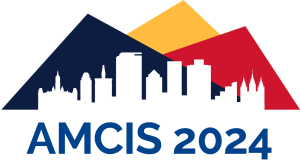Loading...
Abstract
Academic theories concerning digital transformation abound, including two-side markets (Zhou et al., 2024), digital infrastructure (Constantinides et al., 2018), digital ecosystems (Li et al., 2022), and ambidexterity (Koryak et al., 2018). In spite of this theoretical attention, questions remain about how to bridge the theory-practice divide in digital transformation (Van de Ven & Johnson, 2006; Baskerville & Myers, 2004; Karanasios, 2021). Companies exhibit confusion about which management tools and methods to apply to digital transformation, suggesting that there is no clear alignment between theory and practice. This TREO will discuss a multi-case study in China. The findings are that the methods used by Chinese companies for digital transformation are mainly Business Process Management, Change Management, Lean Six Sigma and Business Process Reengineering. The tools deployed are project management, workflows, Plan-Do-Check-Act Cycles and Key Performance Indicators. These companies referred to very few theories, including innovation theory or organizational learning ties. Elaborating on these findings, a “TMT” framework is suggested, relying on “configurations” (Meyer et al, 1993; Mithas et al., 2022) to bridge the practice-theory divide. This TREO gathers managers and academics from China with academics from the USA for discussion on how this framework could contribute to bridge the theory-practice divide in digital transformation, and whether companies in China approach digital transformation differently than most theoretical approaches assume (Zheng and Davison, 2022).
Paper Number
tpp1229
Recommended Citation
monod, emmanuel; jiang, yuewei; Smit, Danie; Joyce, Elisabeth; Gilbert, Douglas; Xu, Yingyi; and Dai, Doreen, "The “TMT” Framework in Digital Transformation. Which Tools, Methods and Theories?" (2024). AMCIS 2024 TREOs. 167.
https://aisel.aisnet.org/treos_amcis2024/167
When commenting on articles, please be friendly, welcoming, respectful and abide by the AIS eLibrary Discussion Thread Code of Conduct posted here.


